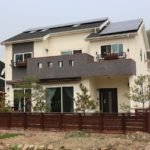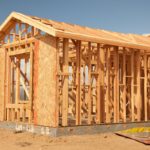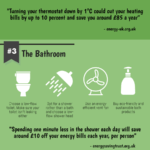We are fortunate to be living in an era of fast paced technological development and innovation. You can find smart technologies, transportation efficiencies and useful appliances for almost any application which makes it easier for us to live with a smaller carbon footprint. With all these amazing innovations, why don’t people live greener lives? It is a common belief that going green is too expensive, but we are here to set the record straight.
If each one of us made at least one eco-friendly change, there would be significant impacts to the universe, our communities and our energy bills.
Energy efficiency means reducing the impact on the environment by consuming less energy. Energy efficient solutions promote a healthier environment, particularly for those suffering from modern-day conditions such as asthma or allergies.
With that in mind, here are 7 simple steps to help you make your home energy-efficient.
1. Replace Incandescent Bulbs with Florescent bulbs
Halogen bulbs, compact fluorescent lamps (CFLs) and light-emitting diode (LED) bulbs offer you long-lasting light and are more energy-efficient than the old incandescent bulbs. Since the average home uses at least 20 bulbs, switching to greener bulbs is an excellent way to save your money.
2. Install Solar Panels
Solar panels are not cheap, but they are becoming trendy ways to heat your water and generate electricity for houses. They assist in saving money on energy bills, they promote lower fossil fuel usage, and they even help you qualify for annual tax incentives. Just install a solar system on your roof and cut down your electricity costs by generating energy independently.
3. Perform an Energy Audit.
By hiring a professional energy auditor, they can evaluate the inefficiencies and wasted energy in your home. They will help you in pinpointing saving opportunities and identify the areas that need improvements.
4. Add Insulation to Your Home
Insulation can help seal air leaks and improve your home’s heating and cooling costs. The idea is to make sure that you install proper insulation, weather stripping and other insulating techniques throughout your house, and you can do this yourself, or seek the services of an expert. If you hire an expert, ensure that they conform to HSE regulations in terms of safety gear and safety precautions and that they have a green energy certification.
5. Upgrade or replace your windows
If you have old and leaky windows, you might need to replace them with energy-efficient models or to boost their efficiency with weather-stripping and storm windows. Double panel windows and other vinyl frames are way energy-efficient than single pane windows and aluminum frames. You may also want to consider tinting your windows and keeping your drapes open to let in some light.
6. Purchase energy efficient appliances
When shopping for new appliances to help make your home more energy efficient, look for devices that have the HE logo. High energy-star certified appliances use less power, and while the upfront capital outlay needs to be considered, they are a long term investment. According to ByPurify, an energy star certified ionic air purifier consumes around 40% less energy than a standard air purifier, this equates to a saving of around $30 per year (and saves 225 kWh/year!)
7. Consider having a Programmable Thermostat
When you are not around, set your thermostat to a high temperature in the summer and to a low temp in the cold months. A programmable thermostat does not cost a lot, and they help you reduce your energy usage.
In conclusion, everyone should be able to find at least one or two things to do to ‘greenify’ your home even if you have a tight budget. By considering these steps, you will save energy and reduce the amount that you need to spend every month on electricity and heating.







